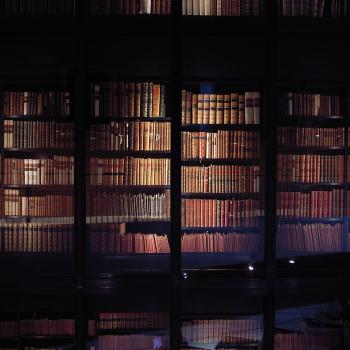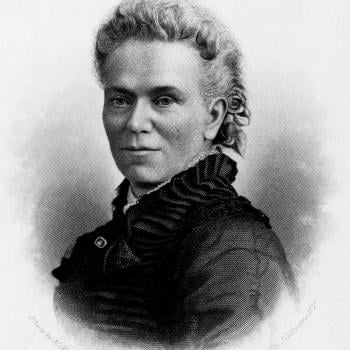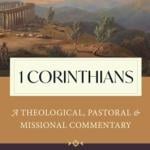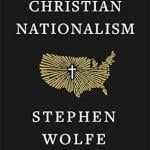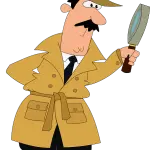The recent furor over shootings of civilians by police has inspired a lot of discussion about eyewitness testimony and the nature of memory, and the question of just how reliable memory can be. If you read the grand jury testimony in the Ferguson, Missouri, case, a number of witnesses reported things that simply did not happen, and could not have happened. Nor did those misleading witnesses necessarily lean to one or other side in the case. If they had been true, some of those statements have benefited the prosecution, others the defense.People were not necessarily lying: usually they were reporting on what they believed they had seen. That affair raised some questions for me – not so much about the current controversies over Ferguson and similar shootings, but rather over the more general issue of how historians work.
However much we think we record events like a video camera, what we recall is subject to a great deal of editing, censoring and reconstruction, depending on our expectations and assumptions. Hal Arkowitz and Scott O. Lilienfeld did a well-regarded piece in Scientific American back in 2009 on “Why Science Tells Us Not to Rely on Eyewitness Accounts,” arguing that “Eyewitness testimony is fickle and, all too often, shockingly inaccurate.” There are now some excellent surveys by Terrence McCoy in the Washington Post, and Jesse Singal in New York Magazine. In a New York Times op-ed, psychologists Christopher Chabris and Daniel Simons conclude that “It is just as misguided to conclude that someone who mis-remembers must be lying as it is to defend a false memory in the face of contradictory evidence. We should be more understanding of mistakes by others, and credit them when they admit they were wrong. We are all fabulists, and we must all get used to it.”
So we are all fabulists …
These arguments about the construction of memory have a special resonance for historians like myself who work on different eras. In many ways, I prefer the distant and long-ago ones because you do not have to deal with the curses of memory and oral history.
Like every other historian, I use documents, which vary in their character depending on the time period. For the early twentieth century, that means official documents and government reports; expert and professional writings on the subject, both in book-length studies and in articles published in scholarly or professional journals; articles published in general-interest magazines; newspaper articles and editorials; and popular culture materials, such as films, novels, pamphlets, or (from the 1920s) radio programs. Visual materials are great – cartoons, postcards, posters, billboards, advertising materials. If can find them, quantitative surveys are wonderful.
You have to decide how far to supplement these materials with oral history accounts and interviews. These can be fine, depending on the gap in time separating event and recollection, and the information you are trying to find. If a memoir written in 1924 is describing experiences in the First World War, that is great, as it is near-contemporary. But what about an account written long afterwards, say in 1970? The same issue arises with oral interviews.
Most writers would be cautious to verify such oral history accounts with strictly contemporary written or published accounts. In reconstructing broad social attitudes, books, pamphlets, magazines and newspapers are unquestionably superior to personal recollections – always provided, of course, that published sources are chosen carefully and objectively, and used responsibly.
Let me take a specific example. Imagine that, as a historian, I wanted to reconstruct public attitudes to President John F. Kennedy during his time in office. I could hypothetically use interviews, but the subjects have to be selected extremely carefully. The interviews only have any validity if subjects were scientifically chosen to represent a random sample of the whole population, rather than ten or a hundred individuals I happened to encounter.
Much more serious though is the issue of memory, a problem very familiar to oral historians. People might just remember events accurately, but attitudes and perceptions are much harder to grasp. If a man was asked today what he thought of JFK in 1962, his answer would be affected by fifty years of subsequent events and reflections, and all the associated hindsight. Asking him what other people thought of the President at that time would be even thornier.
That does not mean that the interview subject would be deliberately deceptive, but in many cases, his account would reflect the accumulated perceptions and re-evaluations of the past fifty years, rather than the actual views held at that time. Try as we might to be scrupulously fair and balanced, we inevitably tend to retroject later perceptions and values into the past, while censoring ideas that we held at the time, which in hindsight seem embarrassing or ugly. That is especially true in hot-button issues of race, gender or sexuality.
We are all fabulists; we are all, also, self-censors.
Even more troubling, those comments don’t even begin to get to the interaction between interviewer and subject. Reading interviews or oral history accounts, it’s always striking to see the role of the interviewer in shaping the conversation, in deciding what subjects are or are not worthy of attention. When the interviewer asks “So, what did you think of X?” the subject is immediately alerted that this is something that he should have had an opinion about, and often, by implication, that his opinion should have taken a particular form. He will then formulate an appropriate answer.
That’s not a criticism of the competence of oral historians, rather than of the whole process. The fact that I am interviewing Mr. Smith means that I have chosen and defined him because he was in a position to know about X – although that might not have been a subject of any great interest in the past era.
It’s like dealing with survey evidence. Tell me the survey question, and I will tell you the answer it will produce.
I have been discussing mainstream secular figures, but special problems apply when we are dealing with religious aspects of history. Conceivably, an informant might recall a charismatic spiritual figure according to the expectations that surrounded him or her at the time, or in the light of hopes that were subsequently disappointed. (Of course, such issues also surround secular “charismatics” like JFK himself).
In trying to reconstruct broad social attitudes at the time, much later interviews of people living in that era are dubious, except as far as they can be validated by strictly contemporary sources, including opinion surveys, and a content analysis of contemporary media, including books, magazines, newspaper stories, television and radio programs, films, and so on. Interviews can provide interesting anecdotes, but as sources for attitudes in particular historical eras, they should be used with extreme caution.
Courts and lawyers have a lot to learn from historians in these matters, in terms of the kind of evidence they regard as particularly valuable. Contrary to the familiar legal assumption, first-hand testimony is not always the best way of reconstructing the past. Or rather, it would be, if witnesses were not cursed with regular, fallible, malleable, human memories.



